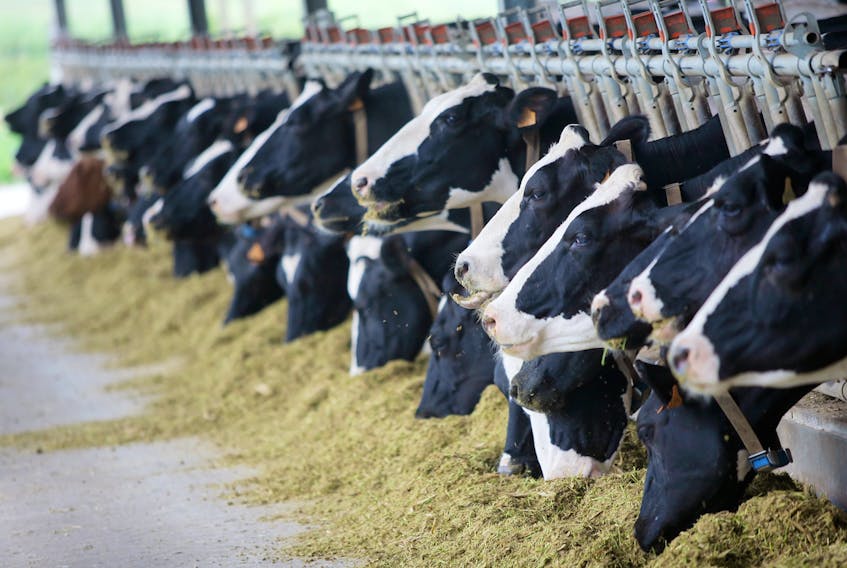Recently, the former dean of the Faculty of Management at Dalhousie University wrote a piece in the Chronicle Herald condemning the Canadian milk production system and in support of the import of American milk.
In his opinion, the demise of supply management and the opening of the borders to American milk is a win for consumers and all Canadians taxpayers. His arguments are misleading. Canadian consumers do not want or need American milk in Canada and we certainly do not want to adopt the wasteful, ecologically unsound and economically bankrupt American system of milk production.
The earlier column provided readers with an economic opinion on supply management that will lead consumers to consider this national policy to be outdated and a burden to the Canadian consumer. I fear that the over-simplification will bias consumers into discarding a system which is serving Canada well.
As an agricultural ecologist, I am concerned with finding the sweet spot of balance among economics, environment and human health. When one takes an agri-ecological approach, it turns out that supply management is an economic concept from the 1970s that provides ecological and social solutions to 21st century challenges.
Agriculture is not merely the plowing of the soil, raising of crops and the herding of animals. Agriculture is the science, art, politics and sociology of changing sunlight (plus soil and water) into happy, healthy people. When one looks at any aspect of agricultural policy only from an economic standpoint, we may make ecological and social blunders.
The process for managing the orderly production of dairy products is complicated, but the principles of supply management remain unchanged from its inception in Canada decades ago. Supply management has been successful since the 1970s in Canada in matching supply to demand, allowing dairy farmers to get a fair price for their product, maintaining a predictable price to the consumer (higher than U.S.) with food quality and safety well assured. Our dairy farmers have not been receiving government subsidies (so the consumer only pays at the store, not through taxes, as is true of many farm commodities in many countries). Their income is based on the price of milk which is determined by the average cost of production plus a percentage return on investment. We do not compete significantly in the export market.
The United States and Europe both intervene heavily in their respective dairy industries with a combination of price supports, subsidies, purchases of surpluses, import restrictions and export subsidies. When it comes to farm support, the U.S. has the deepest pockets, deeper even than the European Union. USDA data shows that for more than a decade, U.S. farm gate prices for milk fail to cover costs of production. Clearly, the ability of processors to purchase milk at prices below the costs of production offers a significant competitive advantage to the American dairy industry.
A recent report by Grey, Clark, Shih and Associates (2018) estimates that in 2015, the support granted to U.S dairy producers represented approximately $35 Cdn. per hectolitre — the equivalent of 73 per cent of the farmers’ marketplace revenue. USDA data also reveals that U.S. dairy farmers operate at a loss; their cost of production is higher than what they earn from the marketplace. Clearly, the ability of processors to purchase milk at prices below the costs of production offers a significant competitive advantage to the American dairy industry.
In 2015, the American government doled out approximately $22.2 billion in direct and indirect subsidies to the U.S dairy sector. This is taxpayer money, which shows that the lower cost of milk at the grocery store does not represent the true cost to the consumer.
But this is not the end of the story for Canadian citizens. Supply management has provided stability to a key rural sector and allowed relatively small family farms to continue to exist and has maintained the social fabric of rural communities. The dairy producer businesses across this country are major economic and social drivers for Canada. Their presence maintains churches, schools, welding shops, supply stores, feed mills, 4-H clubs and Scouts, to name only a few. One only must take a drive through northern New York state to see the effects of the loss of the family dairy farms.
The recent IPCC report on climate change highlights another concern for us as citizens. Dairy cattle are major sources of methane, a greenhouse gas far more potent than carbon dioxide. It is becoming obvious that the number of cattle world-wide must be rationalized. There is no room for excess production beyond our needs. The concept of matching supply to demand began as an economic idea but it is truly now an ecological idea which needs to be expanded to other jurisdictions in the world, not discarded in Canada.
We need a food system in Canada that has a balance of economics, environment and health. The old idea of supply management is a new idea for ecological, healthy, sustainable systems. It should be modified, if necessary, but the principles remain sound.
You can start to see that supply management to rural Canadians is a bit like our health care system. Both have their problems, but both serve us very well.
C.D. Caldwell is professor emeritus, faculty of agriculture, Dalhousie University.









